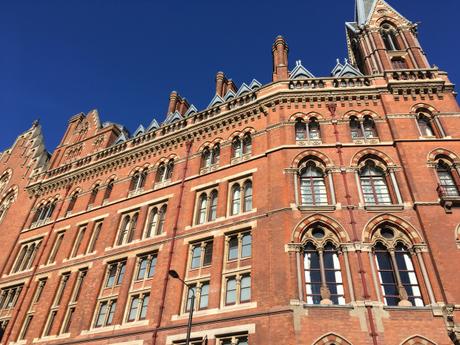
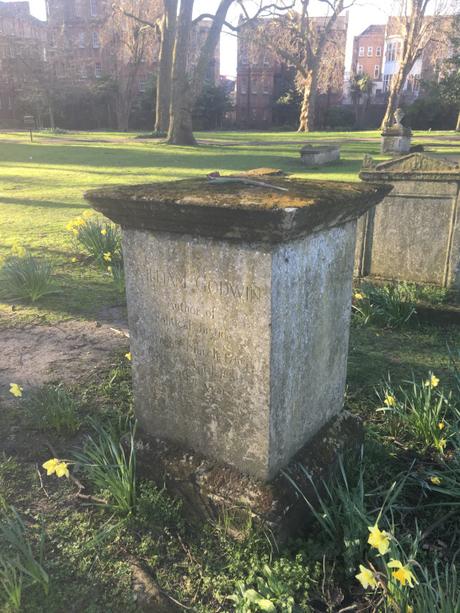
The sun has finally come out in London, and the smell of spring is in the air. Over the past couple of weekends, I’ve been out and about in the city, and found some previously undiscovered gems that were made even more glorious thanks to being seen against the backdrop of blue skies. A couple of weeks ago I was at an English teacher’s conference at the British Library, and one of the speakers happened to mention that just up the road in the graveyard of St Pancras Old Church could be found the grave of Mary Wollstonecraft. As regular readers know, I love nothing more than a poke about a graveyard, and so as soon as the conference finished, I hotfooted it up Midland Road, past St Pancras and a host of modern blocks of flats, to a rather anachronistic looking Victorian church, marooned with its green island of a graveyard amidst the bustling modernity of council estates and high rise apartments. I soon discovered that the church was a Victorian replacement for a much earlier foundation, when the church was situated in the then country village of Somer Town, and was a tranquil, idyllic spot, far from the smoky metropolis.
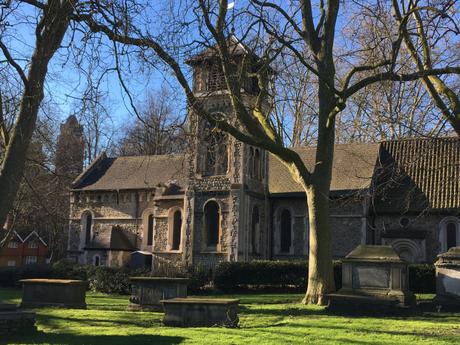
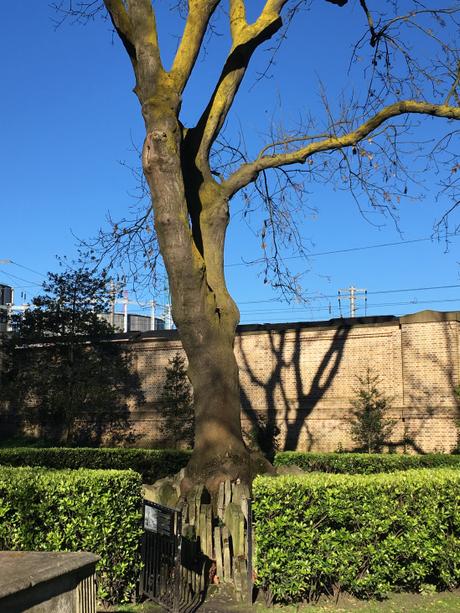
As London expanded, it devoured the village and the church became the heart of a slum, which the Metropolitan Railway saw no harm in tearing down to make way for their new railway line and gargantuan gothic folly of a station in the 1860s. The railway line cut straight through the church’s grounds, necessitating the removal of a number of bodies and graves The Thomas Hardy tree in the back of the churchyard is another fascinating reminder of the graveyard’s links to the railway; as a young man, Hardy was hired to help exhume and move the bodies that lay in the path of the construction works. As can be seen in the photograph of the Hardy tree, the railway line is incredibly close to the church, and is still having an impact on its structural safety nowadays. A beautiful, tranquil and totally unexpected little space in the city, it is a rare survival, as is the grave of Mary Wollstonecraft, which she shares with her husband William Godwin. Despite being in this out of the way spot, I was heartened to see that someone had recently left a tulip on top as a tribute. If you are in the vicinity of King’s Cross or St Pancras, I recommend a brief detour to the church; the graveyard also contains the grave of Sir John Soane of the museum fame, and its rich history makes it well worth a visit.
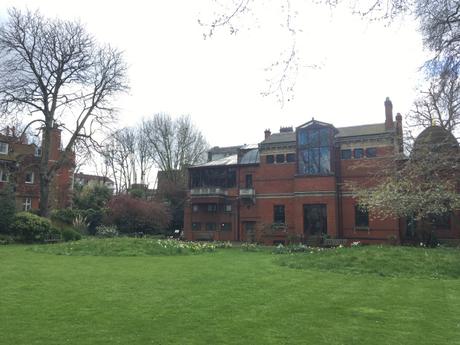
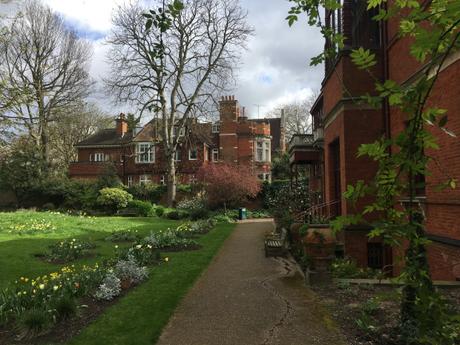
Last weekend, I popped to Leighton House Museum in Holland Park to see the Flaming June exhibition before it closed. I’ve been meaning to go to Leighton House for years; its aesthetic interior is legendary, and though Leighton is one of those Victorian painters who fell out of fashion quite considerably in the 20th century, I have a great admiration for his work. Flaming June, arguably his most famous painting, was bought for a song in the 1960s, when no one was interested in Leighton’s work, and is now displayed in a Portuguese museum. It has not been back to the UK since it was sold, and so it was a wonderful opportunity to be able to see it in the flesh, on show with the other paintings it was initially displayed with when Leighton presented it at the Royal Academy. Fascinatingly, there is a bit of a mystery associated with the group of paintings; all of them bar one has been traced. Most went into private collections, but one, thought to have been given to Queen Maud of Norway, has disappeared entirely. I’d love to know where it is, and whether someone has unknowingly got it sitting in their house somewhere! The house itself is beautiful on the inside, filled with priceless oriental artefacts as well as a range of Victorian paintings both by Leighton and his friends. Its exterior shows clearly how Leighton adapted the house to suit his needs both as a painter and as an aesthete, and the huge studio windows and large garden certainly made me jealous! It’s well worth a visit, and a trip can be combined with nearby 18 Stafford Terrace, another Victorian artists’s house museum that belonged to illustrator Edward Linley Sambourne, which I must revisit soon.
ps. do listen to the latest Tea or Books? podcast here, in which we discover some new middlebrow favourites!
Advertisements